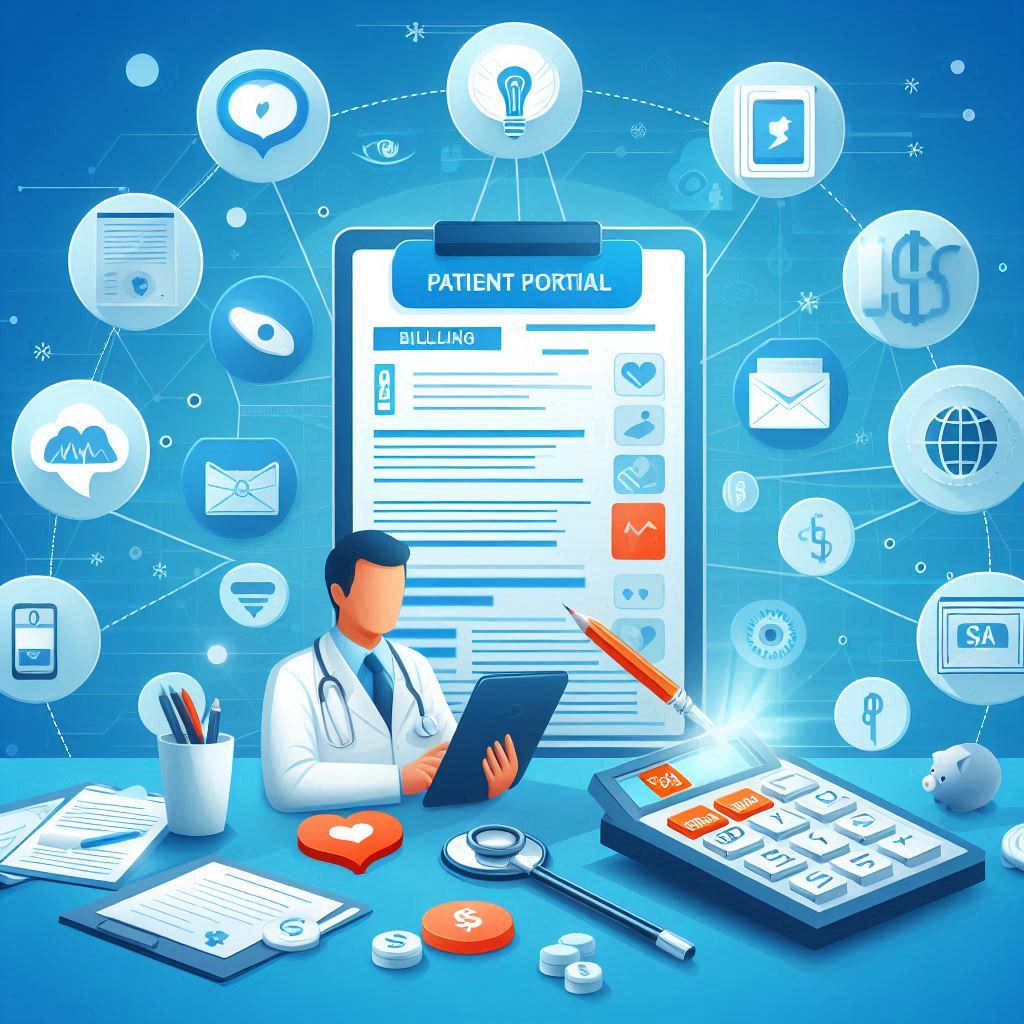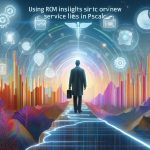In an era where digital transformation is revolutionizing healthcare, patient portals have emerged as a cornerstone of communication between patients and providers. One of the most impactful applications of this technology lies in simplifying billing communications. Clear, accessible, and timely communication about medical billing is critical not only for the financial health of healthcare organizations but also for enhancing patient satisfaction and trust.
Billing-related issues are one of the most common sources of patient frustration. Confusing statements, unclear insurance explanations, delayed notices, and difficulty reaching billing departments compound the problem. Patient portals offer a viable, modern solution to these long-standing challenges by centralizing billing communications in a secure, accessible platform.
This guide explores the role of patient portals in streamlining billing communications, from reducing costs and errors to improving transparency and patient satisfaction.
Understanding Patient Portals
A patient portal is a secure, online platform that allows patients to access their personal health information (PHI), communicate with healthcare providers, and manage various aspects of their care—including appointments, prescriptions, lab results, and billing. Portals are usually linked to an Electronic Health Record (EHR) system, offering a centralized interface for patients to view their medical and financial records.
Modern patient portals have evolved to offer advanced features like:
- Real-time messaging with staff
- Online bill pay and viewing
- Insurance tracking
- Financial aid application
- Cost estimators
- Access to Explanation of Benefits (EOB)
These capabilities provide an opportunity to reimagine the billing process in a more patient-friendly and efficient manner.
The Evolution of Healthcare Billing
Traditionally, healthcare billing involved paper-based statements, manual claim submissions, and extensive back-and-forth with insurance providers. Patients were often unaware of charges until weeks—or even months—after a service was rendered. This lag created confusion, anxiety, and billing disputes.
The integration of digital systems, such as Revenue Cycle Management (RCM) software and EHRs, began to streamline this process. However, many organizations still struggle with fragmented billing communications, where patients must call separate billing departments, insurance companies, and provider offices to understand or resolve a bill.
The digital patient portal emerged as a promising tool to unify these communications, enabling patients to manage their healthcare finances with the same ease they manage their online banking.
The Communication Gap in Traditional Billing
Healthcare billing is inherently complex. Patients often receive multiple statements for the same visit—from the facility, physician, lab, and imaging center. Even when insurance pays a portion, the Explanation of Benefits (EOB) and final balance due may not align, leading to confusion.
This communication gap can result in:
- Late or missed payments
- Increased calls to customer service
- Lower patient satisfaction
- Administrative waste
Key Pain Points:
- Delayed paper statements
- Lack of transparency on charges
- Difficulty in reaching billing staff
- Limited payment options
Portals help fill these gaps by providing real-time, centralized, and self-service options to patients.
Features of Patient Portals that Support Billing
Patient portals are equipped with several key features that enhance billing communication:
a. Digital Statements
Patients can access digital versions of their bills, reducing dependence on mailed paper statements.
b. Online Payment Options
Portals often integrate with payment processors to allow:
- Credit/debit card payments
- HSA/FSA payments
- Payment plans
c. Cost Estimators
Some advanced portals offer cost estimation tools based on CPT codes, provider contracts, and insurance coverage, helping patients anticipate out-of-pocket expenses.
d. Messaging Capabilities
Patients can send secure messages to billing departments for clarification.
e. Insurance and EOB Viewing
Patients can upload insurance cards, verify coverage, and view related insurance documents and adjudication status.
f. Notifications and Reminders
Automatic email or text reminders for upcoming due dates or statements.
Benefits of Billing Communication Through Patient Portals
Using patient portals for billing communication yields numerous benefits for patients and providers alike:
For Patients:
- 24/7 access to statements and balances
- Transparency in cost and insurance payments
- Convenience of paying bills online
- Improved understanding of charges and responsibilities
- Trust and satisfaction in billing clarity
For Providers:
- Reduced call volume to billing departments
- Faster payments and improved cash flow
- Lower administrative costs
- Decreased print/mail expenses
- Better patient engagement and loyalty
Patient Experience and Billing Transparency
Studies show that patients are more likely to pay medical bills when they understand them. The portal provides a platform to:
- Break down bills in understandable language
- Clarify insurance contributions
- Offer links to FAQs or explanatory videos
- Provide downloadable PDFs for record keeping
Transparency leads to higher patient satisfaction scores, fewer disputes, and improved financial outcomes for providers.
Improving Revenue Cycle Management (RCM) with Portals
Patient portals directly support several RCM functions, including:
- Eligibility Verification: Patients can verify insurance details through the portal.
- Pre-authorization Status: View real-time updates on procedures requiring approvals.
- Self-pay Options: Easily manage balances and avoid collections.
- Payment Plan Management: Sign up and monitor custom payment arrangements.
By integrating portals into the RCM workflow, providers gain a more patient-centric, automated, and efficient revenue cycle.
Security and HIPAA Compliance
Patient portals must adhere to strict security standards, including:
- HIPAA compliance
- Encrypted data transmission
- Multi-factor authentication
- Audit trails of user access
These safeguards ensure that sensitive financial and medical information remains protected, maintaining patient trust.
Addressing Barriers to Adoption
While portals offer many benefits, several challenges remain:
a. Digital Literacy
Some patients, especially older adults, may find portals difficult to navigate.
b. Language Barriers
Lack of multilingual support can hinder accessibility.
c. Enrollment Challenges
Patients must be encouraged and educated to enroll in and use the portal.
d. Integration Issues
Not all systems seamlessly connect portals with billing and EHR systems.
Healthcare organizations must invest in education, UX design, and technical infrastructure to maximize adoption.
Real-World Use Cases and Case Studies
Case 1: Large Urban Hospital
After integrating billing communication into its patient portal, the hospital:
- Increased online payments by 45%
- Reduced billing-related call volume by 38%
- Reported a 15% rise in patient satisfaction scores
Case 2: Behavioral Health Practice
By enabling cost estimation tools and e-statements in its portal, the clinic:
- Reduced payment delays by 30%
- Enhanced patient understanding of copays
- Received fewer disputes and complaints
These use cases underscore the transformative power of portals in streamlining billing.
Integration with Electronic Health Records (EHR)
Patient portals are most powerful when fully integrated with EHR systems, enabling:
- Real-time data sync of visits, procedures, and charges
- Automatic updates on insurance adjudication
- Seamless coordination between clinical and financial teams
This integration ensures that billing reflects real-time care, improving accuracy and patient trust.
Automation and Real-Time Updates
Portals allow for automated workflows such as:
- Triggering statements after claim adjudication
- Sending payment reminders
- Adjusting balances in real time after insurance processing
Automation reduces manual errors, delays, and staffing needs, enhancing both efficiency and patient confidence.
Reducing Administrative Burden
Staff often spend hours answering billing inquiries. With patient portals:
- Patients find answers in the portal FAQs or via secure messages
- Billing statements and payment history are accessible 24/7
- Call center volume drops significantly
This shift frees staff to focus on more complex cases and patient needs.
Multilingual and Accessibility Features
To serve diverse populations, modern portals should include:
- Translation features for multiple languages
- Voice-over accessibility
- High-contrast or screen-reader compatibility
- Mobile-responsive design
Accessibility ensures that no patient is left behind in the digital billing transformation.
Empowering Patients with Self-Service Tools
Empowerment is central to patient-centered care. Self-service features include:
- Setting up autopay
- Viewing insurance coverage details
- Estimating out-of-pocket costs
- Uploading documents (e.g., new insurance)
These tools increase patient engagement, reduce anxiety, and foster accountability.
Cost Implications and ROI
Though implementing a portal system has upfront costs, long-term savings include:
- Fewer billing staff needed
- Reduced paper/mail costs
- Lower collection agency fees
- Faster payments and fewer denials
Providers report positive ROI within 12–24 months of full portal adoption.
Staff Training and Workflow Redesign
To maximize success:
- Staff must be trained to guide patients in using billing tools
- Front office workflows may need redesigning to include portal promotion
- Billing teams should monitor portal engagement and resolve flagged issues
Success hinges on a culture of digital fluency and patient empowerment.
Future Trends in Portal-Based Billing Communication
Looking ahead, several innovations will further transform portal billing:
- AI Chatbots: Guiding patients in real time
- Voice commands: Paying via smart speakers
- Blockchain: Securing health and payment data
- Integrated financing options: Patients can apply for loans or aid in-app
- Predictive billing: Using AI to anticipate patient costs
These advances will make the billing experience smarter, faster, and more human-friendly.
Conclusion
In a healthcare landscape defined by complexity, rising costs, and digital disruption, patient portals offer a vital lifeline for simplifying billing communications. By consolidating financial interactions into one accessible platform, portals promote clarity, reduce confusion, and build trust.
Patients gain transparency, autonomy, and ease. Providers enjoy faster collections, lower costs, and fewer disputes. The result is a win-win scenario that redefines how healthcare systems communicate about money—turning a point of frustration into a touchpoint of empowerment.
As technology evolves and patient expectations rise, the organizations that prioritize portal-enabled billing communication will lead the way in delivering compassionate, efficient, and transparent care.
SOURCES
Adler-Milstein, J., & Longhurst, C. A. (2019). Assessment of patient use of a new approach to access health record data among 12 US health systems. JAMA Network Open, 2(8), e199544.
American Medical Association. (2022). Digital health research: Physicians’ motivations and requirements for adopting digital health.
Ancker, J. S., Silver, M., & Kaushal, R. (2014). Rapid growth in use of personal health records in the United States: 2008–2012. Journal of General Internal Medicine, 29(6), 850–854.
Basch, P., Sullivan, K., & Blumenthal, D. (2019). The connected patient: Charting a course to a more integrated healthcare system. The New England Journal of Medicine, 381, 205–208.
Chung, S., Jones, S., & Kuszler, P. (2020). Patient-centered financial communications in healthcare: Challenges and opportunities. Journal of Healthcare Management, 65(2), 88–96.
Dendere, R., Slade, C., Burkett, E., Doebbeling, B. N., & Clay-Williams, R. (2019). Patient portals facilitating engagement with inpatient electronic medical records: A systematic review. Journal of Medical Internet Research, 21(4), e12779.
Garrett, P., & Seidman, J. (2011). EMR vs. EHR – What is the difference? HealthIT.gov.
Heisey-Grove, D., & Patel, V. (2017). Physician practices increasing use of secure electronic messaging with patients. Office of the National Coordinator for Health IT Data Brief, 34, 1–9.
Kruse, C. S., Bolton, K., & Freriks, G. (2015). The effect of patient portals on quality outcomes and its implications to meaningful use: A systematic review. Journal of Medical Internet Research, 17(2), e44.
Maxwell, J., & Stoenescu, G. (2020). Building better billing systems with patient-centered design. Healthcare Financial Management Association Journal, 74(7), 34–41.
Office of the National Coordinator for Health IT. (2021). Individuals’ access and use of patient portals and smartphone health apps, 2020.
Powell, K. R. (2017). Patient-perceived facilitators of and barriers to electronic portal use: A systematic review. Computers, Informatics, Nursing, 35(11), 565–573.
Rosenbaum, S. (2022). Health equity and financial access: Reframing patient billing. Health Affairs Blog.
Walker, D. M., Hollis, M., & Delbanco, T. (2022). Involving patients in reviewing their medical records: The OpenNotes project. BMJ Quality & Safety, 31(6), 446–451.
Zhao, J., Creswell, J., & Park, H. A. (2021). Trends in patient portal adoption: Data from US hospitals between 2012–2020. Journal of the American Medical Informatics Association, 28(10), 2120–2128.
HISTORY
Current Version
July 1, 2025
Written By:
BARIRA MEHMOOD








Leave a Reply